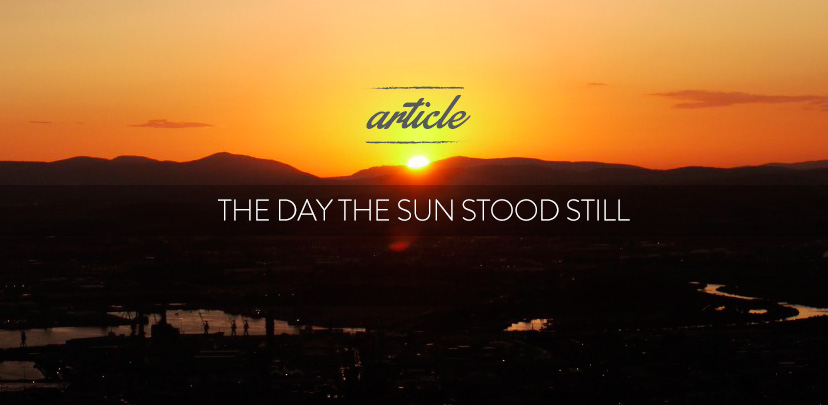Joshua 10:6-14
Possibly the most notable battle in the conquest of the promised land was the battle to save the Gibeonites from the five Amorite kings that was fought in the valley of Aijalon. What was remarkable about this battle was the miraculous intervention of God in causing the sun and moon to stand still for a day.
“Then Joshua spoke to the LORD in the day when the LORD delivered up the Amorites before the sons of Israel, and he said in the sight of Israel, “O sun, stand still at Gibeon, And O moon in the valley of Aijalon.” So the sun stood still, and the moon stopped, Until the nation avenged themselves of their enemies. Is it not written in the book of Jashar? And the sun stopped in the middle of the sky and did not hasten to go down for about a whole day.” (Joshua 10:12-13)
Putting aside discussion about the book of Jashar (which I will try to do in a separate video series), what this particular narrative brings up is the question of how we read biblical texts, or if you like – the question of hermeneutics. The passage above clearly states that the sun and the moon stood still for a whole day. Do we take this reading literally – that is, were the sun and moon arrested in their celestial passage? Well, here’s the problem – even if the sun and moon were stopped dead in their tracks, they would still “rise” and “set” because the rising and setting of these celestial bodies are primarily the result of earth’s rotation. We know this from our current scientific understanding of our solar system.
So, when the writer of the bible said that the sun and the moon stood still, it is highly likely that what actually happened was that the earth stopped rotating. Now, we’re not going to go into the physics of what might happen to the earth’s magnetic core if it stopped rotating but this apparent “conflict” makes a very interesting point about biblical narratives. Very often, biblical narratives are observational records that are not meant to be taken in a literal-scientific sense. Thus even though the bible record clearly says that the sun stood still in the middle of the sky, and this was true observationally, this might not have been a literal scientific description of what actually took place. There was no effort to describe the science that produced the phenomenon observed by Joshua because it was not within the author’s understanding to do so, and by extension it also wasn’t important to God to leave that kind of documentation.
Herein lies the problem when people read the bible as it if were a scientific document – a literal-scientific reading of the bible can often produce messages inconsistent with scientific reality and that goes off on a tangent that the original author never intended. In other words, literal doesn’t always mean more accurate. It can prove to be horribly wrong when we try to make the bible say what it never intended to say.
So did the sun and moon stand still? As far as Joshua could tell – yes. The bible, however, remains quite silent on the science behind this miraculous incident and whilst it could be fun to speculate, it is good to remember that speculation is just that – speculation.
Rev. Daniel Wee is currently serving as the vicar of Church of Our Saviour (Anglican) in Singapore. His interests include OT studies, photography, electronics, statistics and reading (when he has time for them!)




